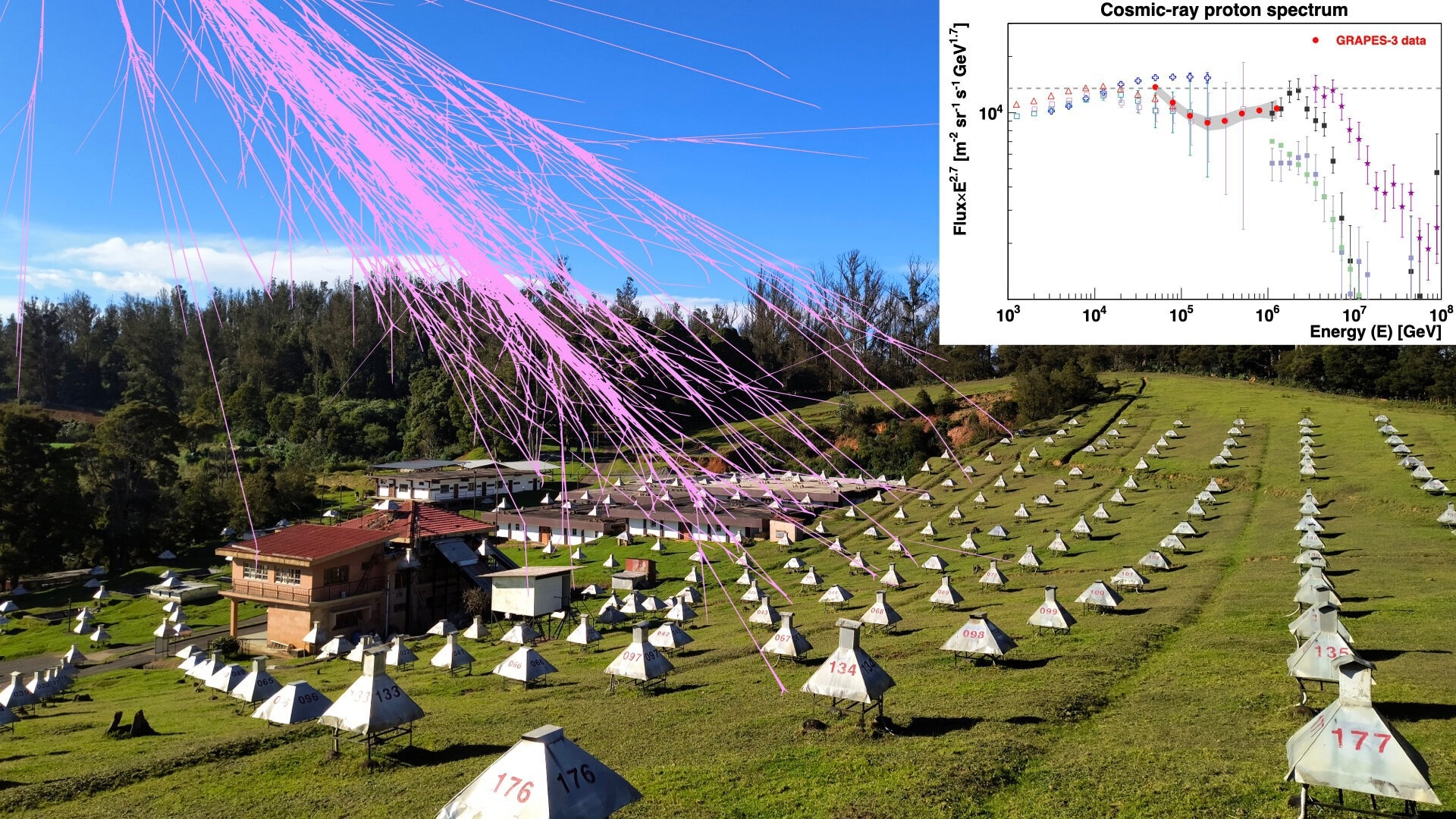While measuring the spectrum spanning from 50 TeV to just over 1 peta-electron-volt (PeV), the Tata Institute of Fundamental Research’s GRAPES-3 experiment in Ooty, India, has found a new feature in the cosmic-ray proton spectrum at roughly 166 TeV energy.
 A view of the GRAPES-3 experiment in Ooty, India depicted with a simulated cosmic ray shower. Image Credit: Tata Institute of Fundamental Research
A view of the GRAPES-3 experiment in Ooty, India depicted with a simulated cosmic ray shower. Image Credit: Tata Institute of Fundamental Research
The observed feature raises the possibility of reassessing the knowledge of the origins of cosmic rays, the processes that accelerate them, and how they spread throughout the galaxy.
Pravata K. Mohanty, a faculty member at the Tata Institute of Fundamental Research in Mumbai and the Principal Investigator of the GRAPES-3 experiment, led the study. The observations were published in Physical Review Letters.
The discovery of cosmic rays occurred over a century ago. The cosmic rays are thought to be the universe’s most energetic particles. The cosmic rays continuously and nearly uniformly bombard Earth from all directions at a constant rate from space. The cosmic rays penetrate the atmosphere of Earth and release a shower of particles that fall to the ground nearly as quickly as light. Electrons, photons, muons, protons, neutrons, and other particle types comprise the shower particles.
Observations of cosmic rays span an astonishingly large energy range (108 to 1020 eV). A power law describes how the flux of cosmic ray particles falls off sharply with energy.
A kink in the cosmic-ray proton at about 3 PeV known as the “Knee,” discovered about seven decades ago, is believed to be the maximum energy for cosmic-ray acceleration within the Galactic sources.
Single power law description of the cosmic ray spectrum up to the Knee energy has been proposed for a long time and explained by various models. This observation by the GRAPES-3 experiment shows a new feature above 100 TeV and below the Knee.
With the help of a large-area muon detector and a dense array of plastic scintillator detectors, the GRAPES-3 experiment’s data collection area was several thousand times larger than that of space-based detectors. This allowed for a more thorough analysis of cosmic rays above 100 TeV, where space-based measurements are imprecise due to low statistics.
Fahim Varsi and other team members analyzed a subset of approximately 8 million cosmic-ray shower events recorded by these detectors, measuring the cosmic-ray spectrum with CPU-intensive computer simulations.
Journal Reference:
Varsi, F., et al. (2024) Evidence of a Hardening in the Cosmic Ray Proton Spectrum at around 166 TeV Observed by the GRAPES-3 Experiment. Physical Review Letters. doi.org/10.1103/PhysRevLett.132.051002.